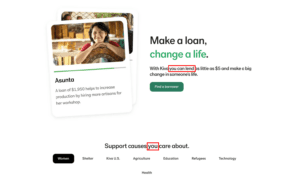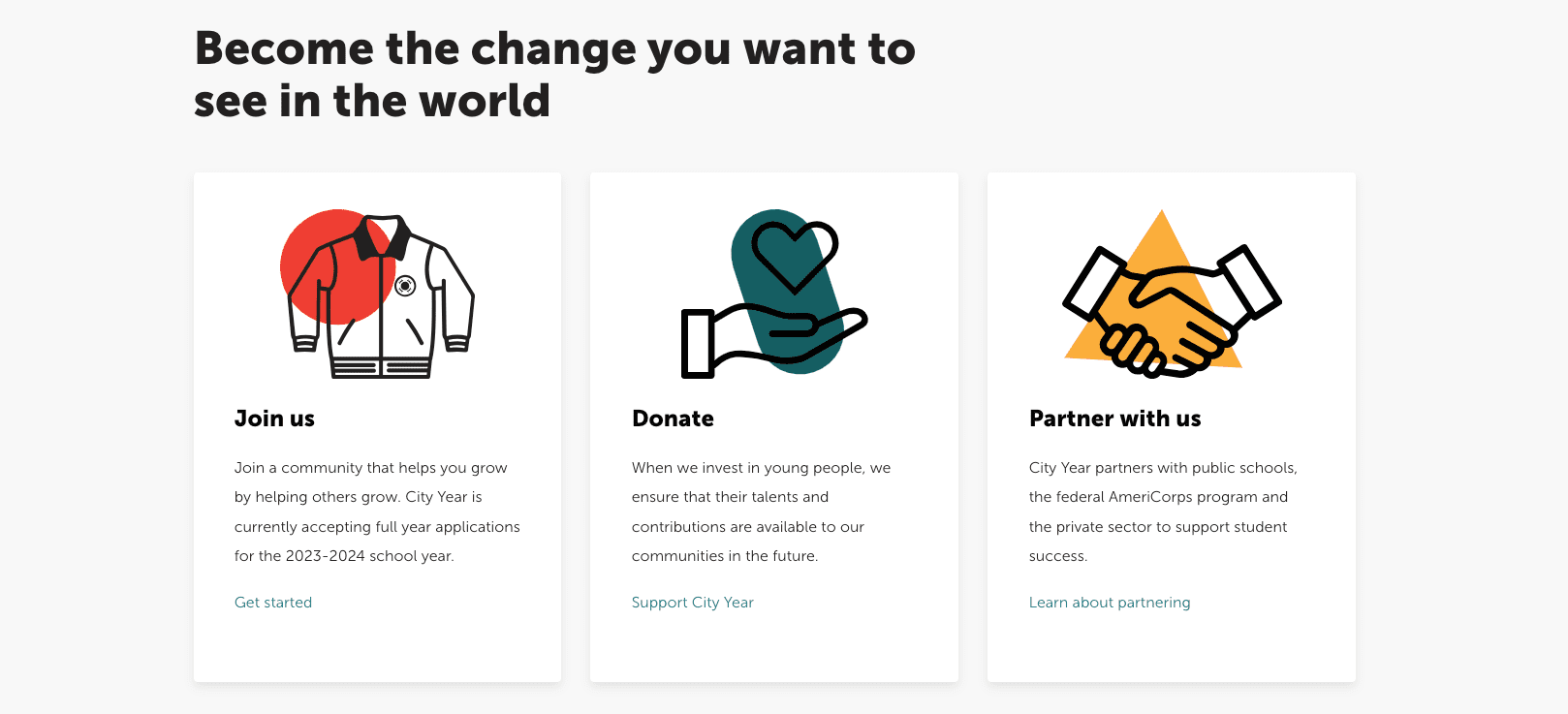What is storytelling and why is it important to nonprofits?
Storytelling is all about communicating a message through a narrative. Unlike plainly stating a message, storytelling allows us to evoke emotion, build connection, and inspire action. When it comes to nonprofit website success, most veterans in the industry know that these three elements are essential to donor retention, engagement, and more.
Unlike other forms of marketing, storytelling allows us to create a lasting emotional bond with our audience. When we can successfully create this bond, we can make more impact than ever before.
So, what makes a good story?
There are several components to storytelling. One of the most essential pieces is the arc.
A story arc is the structure of a narrative that guides the reader or audience through a journey. For example, most Disney movies follow a tried and true story arc called the “hero’s journey.” Other common story arcs are the “rags to riches” journey or the “Oedipus” story arc commonly used by Shakespeare and found in other tragedies.
These arcs exist because they strike a powerful chord in the human psyche. Nonprofits, like some of the most classic stories in literature, use these story arcs to inspire their audiences. However, unlike some of our favorite novels or movies, the key to successful storytelling in the nonprofit industry is all about creating a story arc that allows your audience to be the hero.
How to create a compelling story arc for your nonprofit website
All great nonprofit story arcs follow a similar blueprint. Most, if not all, create their narratives around the following three, central components:
1. Begin with the central problem
Like most great stories, a successful arc typically begins with a main problem or issue that the hero must solve or overcome.
In the case of a nonprofit, the “issue” is the problem that your organization is trying to solve (i.e. ending homelessness, eradicating cancer, etc.).
2. Provide context
Much like a novel has a rich setting and plot, great nonprofit storytelling requires context. Context allows your readers to fully understand the scope of the problem, the characters involved, and where the plot is headed.
In the nonprofit world, context refers to information about your organization—it answers the “who, what, where, when, and why” behind the issue you’re trying to solve. This context not only provides more clarity to readers, but it builds essential trust.
3. Create opportunity (ask)
All great stories have a hero, and most have a happy ending.
Once you’ve identified the problem at hand, and given your readers appropriate context, it’s time to ask them to become the hero, or in this case, help solve your central problem. This might look like a call-to-action to donate, sign-up for a newsletter, or even volunteer. Regardless of the “ask,” great storytelling makes readers feel like the answer to the problem, and the hero in the story.
What components make up great nonprofit storytelling?
A hero
The hero is the character who tackles the conflict and provides a resolution. Great nonprofit storytelling knows how to put its audience at the center of the story, in the hero role, to encourage action and “resolution” in the form of donations or support.
Donor-centric language
A great way to put your audience at the center of the story is to change the language on your website from “we” to “you.” Instead of an organization saying that they are making an impact, great storytelling makes you (the audience) feel capable of making change.
Compelling characters
A great way for nonprofits to engage visitors on their websites is to use real characters as part of their story. Having real characters (or beneficiaries and other stakeholders, in the case of nonprofits) helps to create empathy between the website visitor and the mission of the organization.
A great example of nonprofits using real characters in their story to strengthen their messaging comes from one of our clients at 118Group, Helping Our Women. Their website highlights the stories of real constituents (like characters in a novel) who have used HOW’s services.
6 Best Examples of Nonprofit Storytelling in Action
Feeding America
Feeding America is a great example of expert storytelling in action.
Here’s what we love about this website:
- It utilizes touching imagery and text to build an emotional connection
- It immediately identifies and communicates the central issue or problem that the organization is trying to solve
- It provides essential context (statistics and facts) to help readers understand the depth of the problem at hand
- It offers several, clear opportunities to be the hero, or act—encouraging readers to donate, and get involved



City Year
Similarly to Feeding America, City Year is quite strategic about their storytelling.
Here’s what we love about this website:
- It starts with a positive “problem”
- It creates a sense of opportunity and positivity (essential for emotional bonding)
- Empowers the reader to feel that they can make a difference (be the hero)
- Speaks directly to the reader, so they feel a part of the movement
- It provides essential context (facts and statistics) to build trust with readers
St. Jude Children’s Research Hospital
St. Jude’s is incredibly well-known—in part because of the organization’s ability to connect with donors on an emotional level.
Here’s what we love about this website:
- It puts a face to the beneficiaries of donations (as opposed to talking about beneficiaries in a more abstract way)
- It immediately appeals to readers emotions
- The call to action is clear, succinct, and reader-friendly
- It includes personal stories


Kiva
Kiva, an organization that enables people to lend money to entrepreneurs in developing countries, is another great example of storytelling in action.
Here’s what we love about this website:
- Its use of donor-centric language
- Its use of personal stories to create compelling characters
- It’s emotional call to action

The Nature Conservancy
This well-known organization works to protect natural resources globally. In the example below, they are clearly putting the user at the center of the action.

Here’s what we love about this website:
- It allows the user to feel like a central part of the story (the hero)
- It offers a clear opportunity to get involved
- It speaks directly to a specific audience

Charity Water
Another great website example that showcases the power of leveraging real character’s from your nonprofit’s story comes from Charity Water, an organization whose mission is to help provide clean drinking water to those in need. In the example below, they present a section titled Stories from the Field and features the real story of a woman named Helen who was impacted by the organization’s services.

Here’s what we love about this website:
- It offers users a chance to read stories of real people (emotional bond)
- It demonstrates how a user’s action can create real impact
- It uses testimonials to connect with readers
Nonprofit Storytelling: Final Thoughts
Stories are a powerful tool for creating empathy and inspiring action from your website’s visitors. Nonprofits that tap into the human propensity for stories will spark greater interest and involvement from their audiences. And ultimately, make more impact than ever before.





